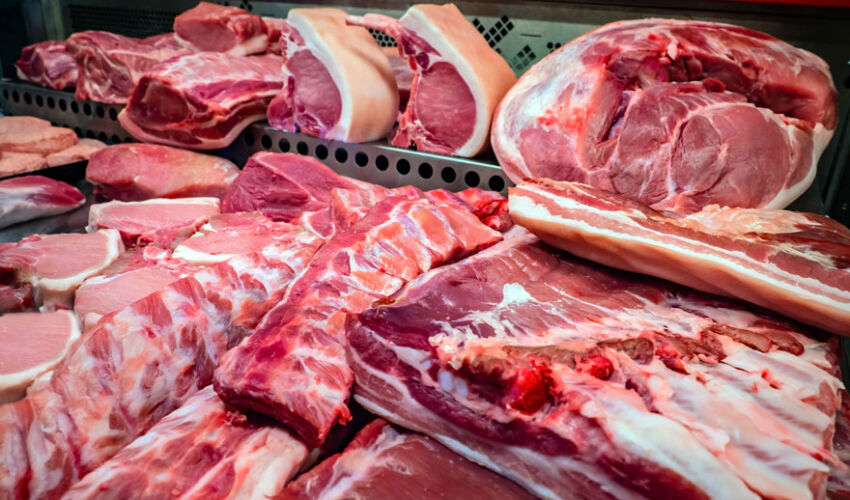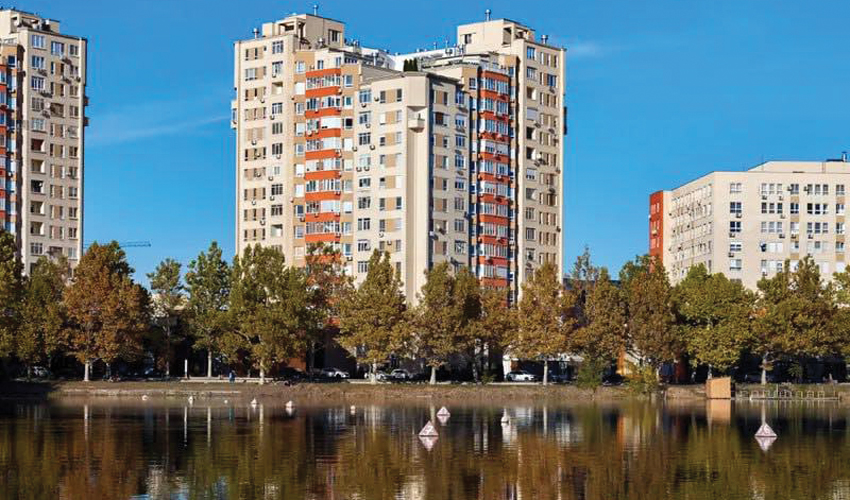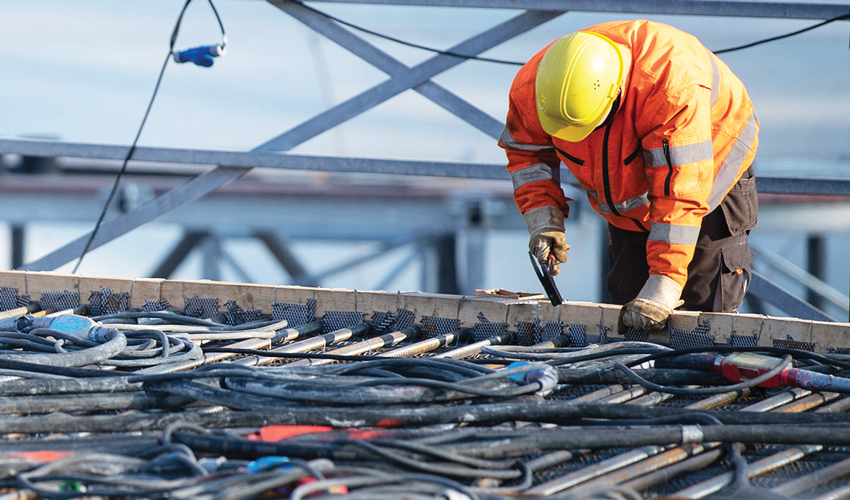
| Country | Wholesale price, euro/kg, excl. VAT |
| France | 2,10 |
| Poland | 2,13 |
| Spain | 2,18 |
| Germany | 2,20 |
According to PÎIPC data, at the beginning of March (before the outbreak of African swine fever – ASF), the wholesale price of pork on bones in RM averaged 44 lei/kg (including VAT). Accordingly, by the middle of May, it rose in price for processors by 59%. If the trend does not change, by the beginning of summer the average wholesale price for chilled pork half carcasses at 75 lei/kg will be very real. At the same time, already now Moldovan pork in bulk costs about one and a half times more expensive than the average price in the EU countries.
Average price of pork (carcasses) in EU countries, January-April 2025, Eurostat
Meanwhile, the leadership of the Ministry of Agriculture and Food Industry MAIA since the detection of ASF in March this year and the subsequent destruction of about 119 thousand pigs kept on the two largest pig farms in the country, and to this day continues to claim that there is no shortage of pork on the Moldovan market. And that there are no preconditions for a rise in pork prices. The representatives of the PÎIPC patronate consider these statements to be at least untrue.
The general director of Carmez Processing S.R.L. Rodion Melnik claims that the company is able to purchase only about half of the weekly 100-120 tons of fresh chilled pork from contractors. The main reason is the situational (not stipulated by long-term contracts) rise in the price of raw materials.
Meat processing companies are still able to maintain sufficient production volumes of finished products at the expense of imported frozen pork, purchased earlier within the duty-free Euroquota-2025. For reference, in April, the average price of European frozen pork, purchased within the quota, averaged about 57 lei/kg (2.9 euros/kg, delivery basis – EXW, without VAT). However, the stocks of this raw material are running out, and the quota is currently closed (fully selected by importers).
According to Rodion Melnyk, taking into account the rise in the price of local chilled pork, the company was forced in May to increase prices for the assortment of sausages containing pork by an average of 5-7%. Some PÎIPC member enterprises also had to take the unpopular measure of raising prices for products of some assortment items.
Moreover, there are already all the economic prerequisites for increasing the selling prices for lump meat delicacies-smoked meats. And more significant – approximately by 15-20%. However, meat processing companies have not yet taken such measures, so that these, in principle not cheap products, have retained their attractiveness for a more or less wide range of consumers. But portion/lump meat products will definitely rise in price during the next round of price growth, which will not be avoided if the situation on the raw materials market does not change for the better (for industrial and household consumers).
By the way, according to the estimations of meat market operators from RM, supermarkets have also increased the prices for fresh (chilled, cut/portioned) pork for the period from March to May by 7-22% (depending on the chain and assortment position).
The PÎIPC administration believes that the stocks of imported frozen pork at meat processing plants will run out completely within a maximum of two months.
The functionaries of the Ministry of Agriculture and Food Industry of MAIA have high hopes for the import of adult pigs for slaughter to Moldova by pig-breeding companies from EU countries to compensate for the shortage of pork. What makes this combination particularly attractive is the important fact that, unlike imports of frozen meat, the import of live animals from the EU is already liberalized – exempt from customs duties (i.e., it does not involve the loss of budget revenues planned for 2025). As a continuation of this policy, the authorities and pig farmers are also considering the option of importing piglets for fattening on Moldovan pig farms.
However, according to the PÎIPC patronage, the adult pigs imported for slaughter did not grow up eating Moldovan forage. That is, they did not contribute to the country’s agricultural growth. Even worse, recently there was a situation when cattle trucks with Hungarian pigs were stopped at the Romanian-Moldovan border for quarantine reasons (in Europe, along with ASF, there is a tense situation with another dangerous disease – foot-and-mouth disease). Much to the relief of the Moldovan meat market, the importation of animals from Romania to Moldova was soon resumed. However, this situation showed very clearly how high the risks are. They should not be neglected in any case.
According to the PÎIPC management , it is of great importance that in the first half of May, although a significant number of live pigs (about 5.2 thousand animals) were imported from the EU, this is clearly insufficient to fully supply the Moldovan market with raw meat for the food industry.
And one more important aspect – in continuation of the theme of the vulnerability of the meat market due to the current problems in the pig breeding sector. In order to import European piglets for fattening in Moldova, they need to be housed somewhere. Those farms, where the stock was eliminated due to the ASF outbreak, will have to undergo a rather long period of disinfection. Given the tense epizootic situation at the borders and inside the country, a high concentration of pigs on other pig farms is also dangerous at the moment. Finally, it is still unclear whether investors in the two ASF-affected pig farming companies (and indeed any other livestock enterprises) are willing to invest in what has turned out to be a very risky business.
Meanwhile, due to the liquidation of the pig population in connection with ASF and the loss from the production chain of the two largest pig farms in RM for a long time, the meat market in the medium term has already lost about 11 thousand tons of pork (carcasses).
In this situation, PÎIPC continues to insist on the exemption of frozen pork imported to the Republic of Moldova (parts of carcasses, tariff item HS 0203) from customs duty for the period until the recovery of the number of pigs on industrial farms in the Republic of Moldova. The most curious thing is that, according to the representatives of the patronage, the heads of large Moldovan pig farms do not object to this anti-crisis measure.













